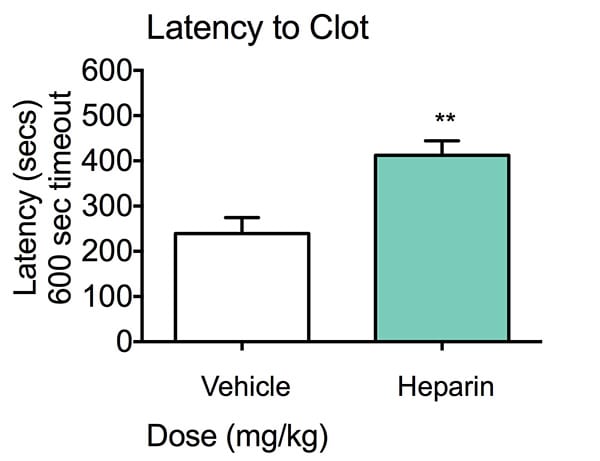Bleed Time Assay and Anti-Thrombotic Model
Vascular thrombosis is defined as the formation or presence of a blood clot inside a blood vessel. This clotting can be deleterious and evoke events such as stroke and heart attacks. Anti-coagulants and anti-thrombotic agents are used to prevent this unwanted blood clotting and are commonly used prophylactically in prothrombotic situations by inhibiting the coagulation cascade in vivo .
Animal models in cardiovascular research include bleeding time assays in rodents. This model can be used to assess the coagulation cascade in vivo and thereby predict the anti-thrombotic/anti-coagulant potential of test agents.
In this assay, we established a common bleeding time model and used Heparin to validate and benchmark this model. This is typically run as an acute (one day) model and has relatively low variability such that group sizes of 6 to 8 animals may often be sufficient.
Ready to get started or looking for a custom model?
Contact us today for more information about our bespoke research models and to discuss how we can help you answer your unique research questions.

Latency to Clot. CD1 mice were treated with vehicle or Heparin five minutes prior to testing. The animals’ tails were then cut and placed in a flask containing 37°C water. Latency to clot was measured in seconds with a 600 second timeout. The Heparin group displayed an increased latency to clotting time compared to vehicle. Data are mean ± SEM analyzed using an unpaired t-test; **p<0.01 compared to vehicle.
Frequently Asked Questions
Absolutely! We can collect blood at any time throughout this assay. We work closely with other CRO partners who can analyze the blood for platelet activity or other properties of interest
Most commonly, the latency to clot is used for this study. The reference compound, heparin, is widely known to prevent clotting and shows and increase in latency to clot.
Synonyms: blood clot, thrombosis, clotting
